The 2023 United Nations Climate Change Conference (COP28) will mark the first global stocktake exercise in which the international community will evaluate the progress – or the lack thereof – made towards the 2015 targets.
While global CO2 emissions levels are far higher than what the contracting parties had promised each other they would be, countries continue to invest in fossil fuels production. This ongoing situation casts a shadow over efforts to combat climate change.
The Climate Overshoot Commission’s Report
In September 2023, the Climate Overshoot Commission – an independent group of global leaders – released a report titled “Reducing the Risks of Climate Overshoot.” The report recommended unconventional measures, including exploring Solar Radiation Modification (SRM) alongside mainstream solutions like accelerating decarbonization and improving climate adaptation efforts. The Commission stressed the importance of extensive research on SRM’s risks and benefits, pushed for enhanced international governance discussions, and issued a cautionary call for a “moratorium on the deployment of solar radiation modification and large-scale outdoor experiments.”
What is Solar Radiation Modification (SRM)
Solar Radiation Modification (SRM) refers to (theoretical) methods to reflect some fraction of sunlight into space, thereby reducing global temperatures. The most studied SRM technique is the stratospheric aerosol injection (SAI) which consists of introducing a thin aerosol layer in the higher atmosphere.
After being sometimes debated at the UN level over the past decade, it is only recently that SRM has started leaving the realm of science fiction and gaining the attention of the scientific and policy community. This has already contributed to sparking a polarised debate over research and deployment risks.
Scientific community’s perspectives on SRM
In 2022, over 400 social scientists, legal scholars and NGOs called for a “Solar Geoengineering Non-use Agreement” to prevent the normalisation of solar geoengineering as a climate policy option. Their concerns stem from the incomplete understanding of the risks associated with SRM, ranging from potential impacts on weather patterns, agriculture, and food to the so-called “termination shock.” They also fear that the availability of SRM techniques in the future could undermine ongoing climate mitigation efforts.
On the other hand, over 130 scholars – mostly from the environmental and climate fields – contend that focusing only on SRM’s risk will ignore the risks of climate change in a world without SRM. These scholars call for balanced research which examines the risks and benefits of potential deployment of SRM, emphasising its crucial role in l future decisions on climate policy.
SRM international governance
The global implications of SRM deployment warrant attention at international level. While existing international agreements, general principles of international law, and customary international law may already provide some applicable norms, especially when it comes to outdoor field tests (see the image below), SRM currently lacks a dedicated legal or governance framework at the international level.
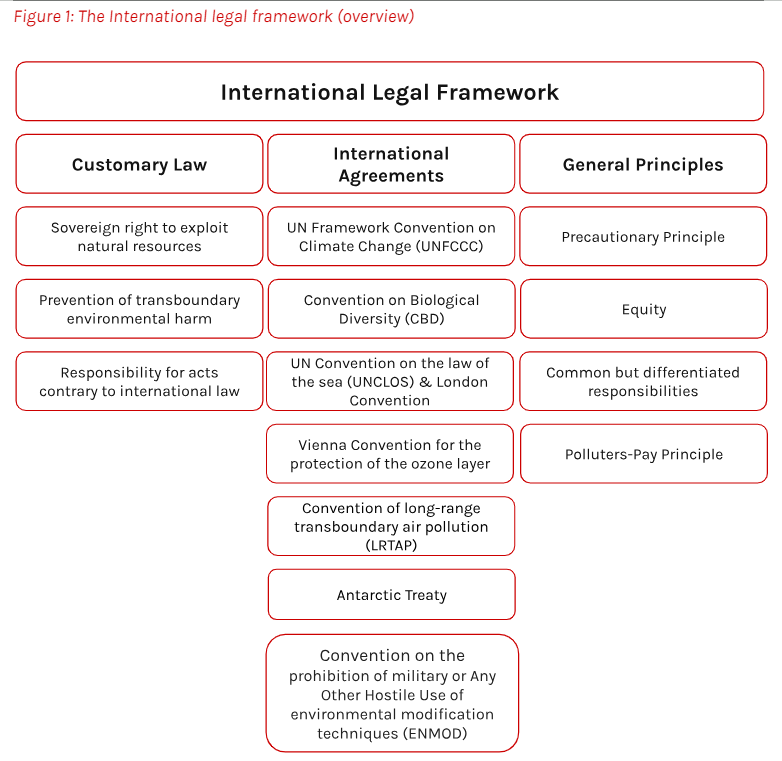
Over the past decade, SRM technologies have been facing increasing scrutiny under existing international frameworks (see the overview below). For instance, in 2010, the COP to the Convention on Biological Diversity (CBD) adopted a non-binding moratorium on climate geoengineering activities, reaffirmed in 2012 and 2016. The United Nations General Assembly (UNGA) also recommended caution in intentional large-scale atmosphere modification in its 2021 resolution. In February 2023, the UN Environment Programme’s “One Atmosphere” report advised against near-term large-scale SRM deployment but proposed a robust scientific review of SRM, differentiated governance framework for small-scale outdoor SRM experiments, a broader framework for stratosphere governance and a globally inclusive conversation on SRM. Finally, the topic of the impact of emerging climate technologies – such as SRM – on human rights has been discussed in the last meeting of the UN Human Rights Council at the end of September 2023, following the publication of a study calling for a moratorium on geoengineering technologies until an appropriate governance framework is developed.
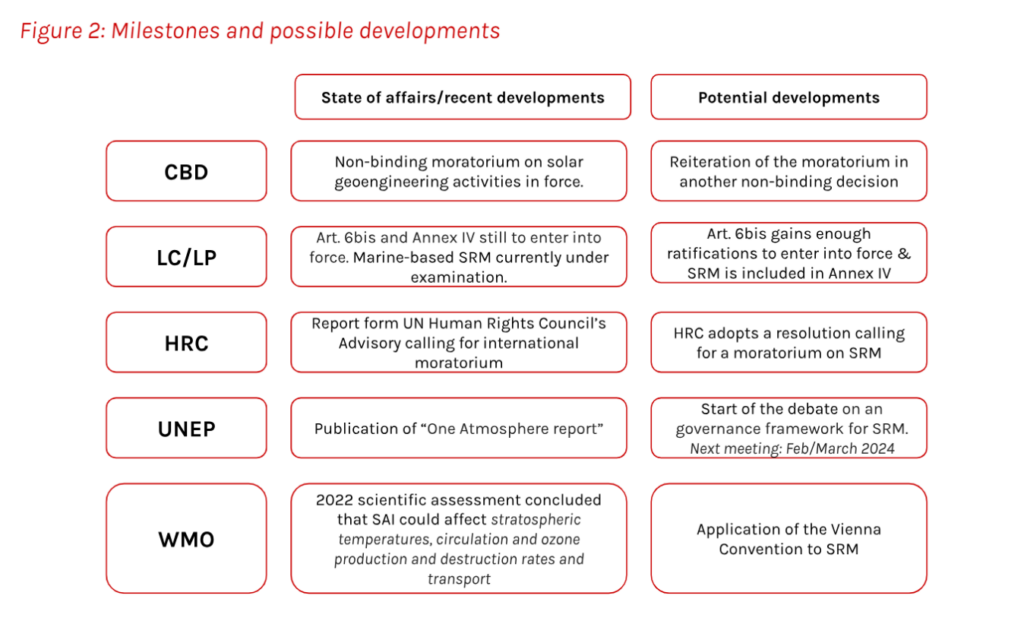
Some developments in the scientific evaluation of SRM techniques might occur soon. At the presentation of the opening of the IPCC session on the Synthesis Report of the Sixth Assessment Report, the World Meteorological Organization (WMO)’s Secretary-General Prof. Petteri Taalas stressed “the need to have a report on geoengineering [concept that encompasses SRM techniques and carbon dioxide removals], which is one of the hot topics and which also carries many risks, and should be evaluated by the science community.”
The EU and SRM
Until recently, SRM was absent from the EU public discourse around climate change. In reply to a written question posed by an MEP in 2014, the European Commission categorically affirmed that “neither existing nor proposed EU legislation includes any programmes, policy or activities that promote geoengineering by stratospheric aerosol or other forms of aerial aerosol spraying. Such a policy would run counter to the EU principle that environmental problems should, as a priority be rectified at the source”.
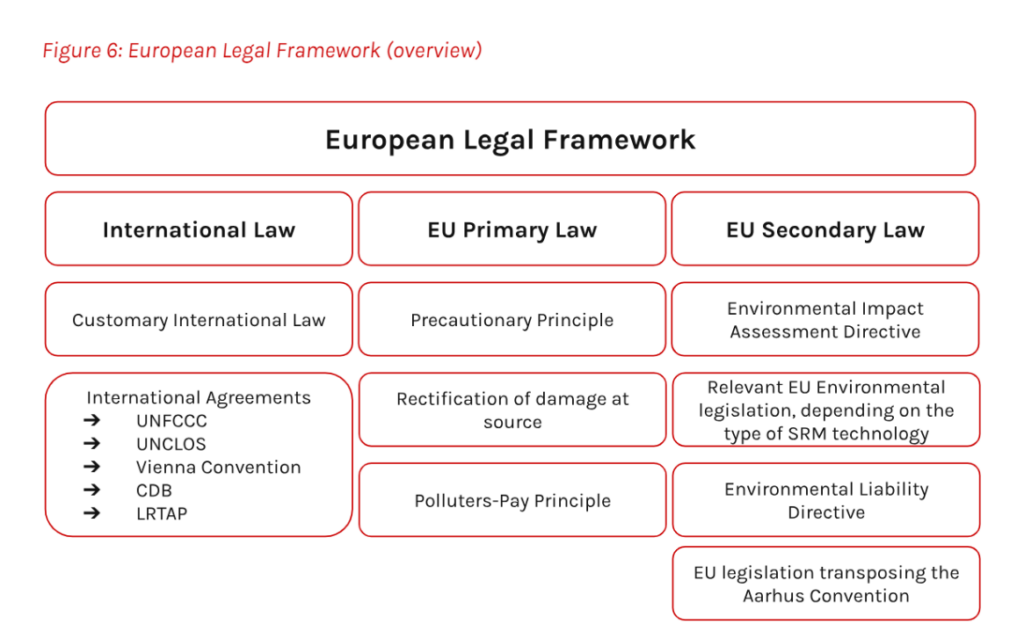
However, a notable shift became evident in June 2023, when the Commission, in its Communication on “A new outlook on the climate and security nexus”, announced specific actions on SRM. In particular, the Commission pledged to support international efforts to assess comprehensively the risks and uncertainties of climate interventions. Additionally, it committed to fostering discussions on a potential international framework for geoengineering governance, including research-related aspects.
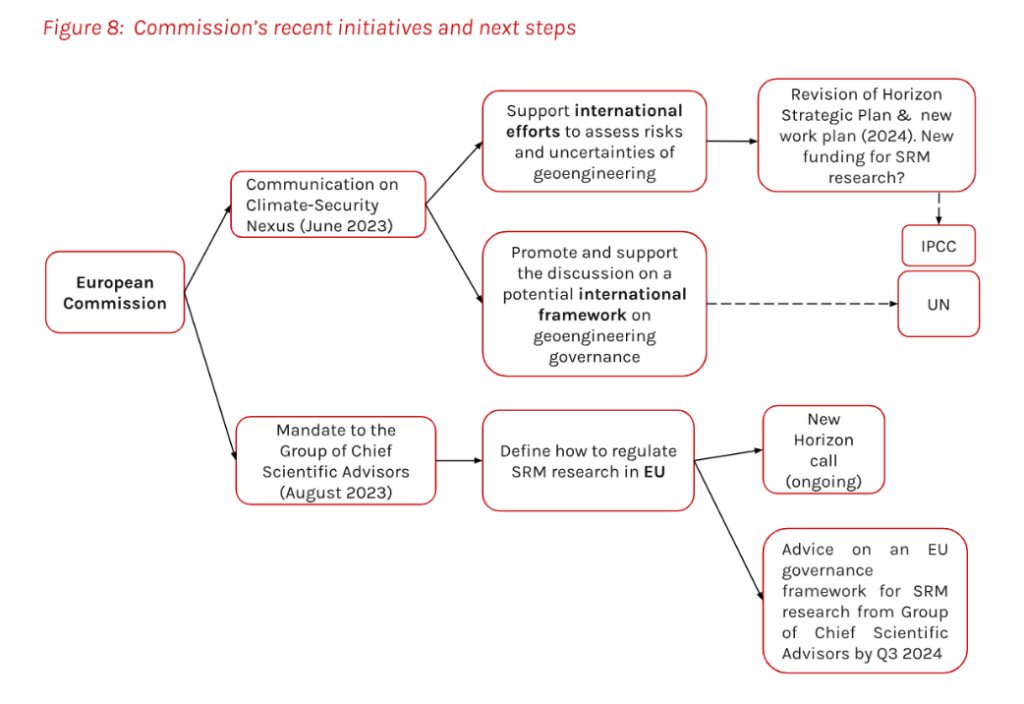
Acting upon its words, in early August 2023, the Commission tasked the Group of Chief Scientific Advisors to provide recommendations to support the EU position on SRM. The Commission recognised that interest in certain forms of SRM may grow in the future, particularly in scenarios of temperature overshoot or the risk of reaching climate tipping points.
What’s next?
The risk of overshooting Paris Agreement climate goals and the growing global interest in SRM – including from the EU and recently the USA – suggest imminent discussions and actions on SRM. Potential developments could consist in scientific scrutiny by the IPCC, and a non-use agreement at the international level, in line with the recommendations advanced by the Climate Overshoot Commission and – very recently – by the European Parliament.
Sooner or later, the international community will need to face a crucial decision: whether to start exploring the feasibility of a regional or worldwide deployment of SRM, before that it is too late also for this.
At the end of the day, it will be a matter of weighing out two different risks: the risk of entering the advanced stage of the climate emergency without a Plan B and the risk of fabricating a dangerous Plan B without having really tried to deliver the Plan A.
Ahead of important milestones in climate discussions at both the EU and international levels, The Good Lobby conducted a study – on which this article is based – to systematically examine the existing governance, research and advocacy framework surrounding Solar Radiation Modification. Through a comprehensive analysis of legal and scientific documents, past activities of relevant institutional and non-institutional actors, allocation of EU funds as well as constant monitoring of the EU public debate, the research identified the key potential developments on the debate on SRM at both international and EU levels, along with the actors influencing the debate on the topic. Such an analysis marks the first of its kind at the EU level.
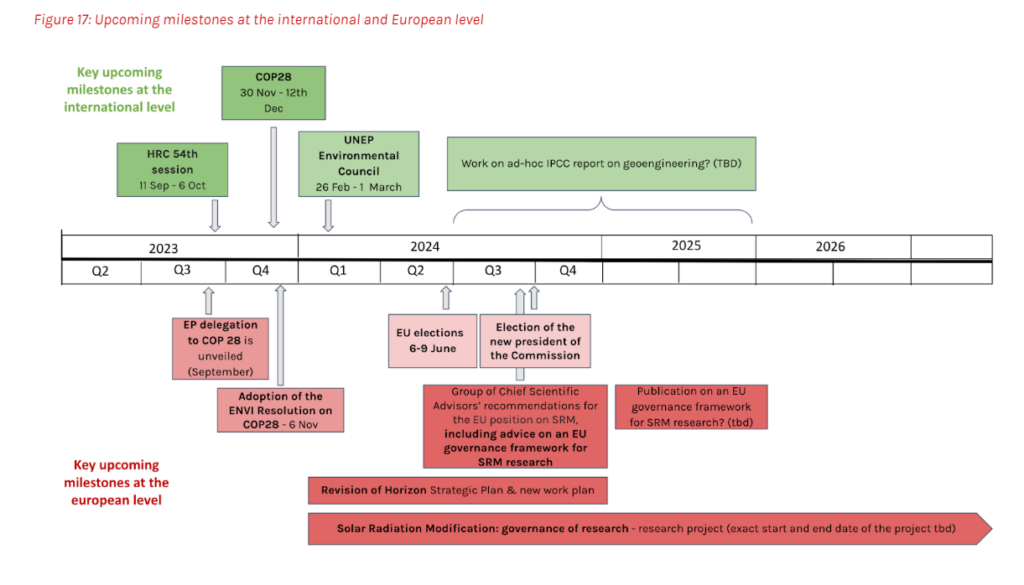
Ahead of important milestones in climate discussions at both the EU and international levels, The Good Lobby conducted a study – on which this article is based – to systematically examine the existing governance, research and advocacy framework surrounding Solar Radiation Modification. Through a comprehensive analysis of legal and scientific documents, past activities of relevant institutional and non-institutional actors, allocation of EU funds, as constant monitoring of the EU public debate, the research identified the key potential developments in the debate on SRM at both international and EU levels, along with the actors influencing the debate on the topic. Such an analysis marks the first of its kind at the EU level.